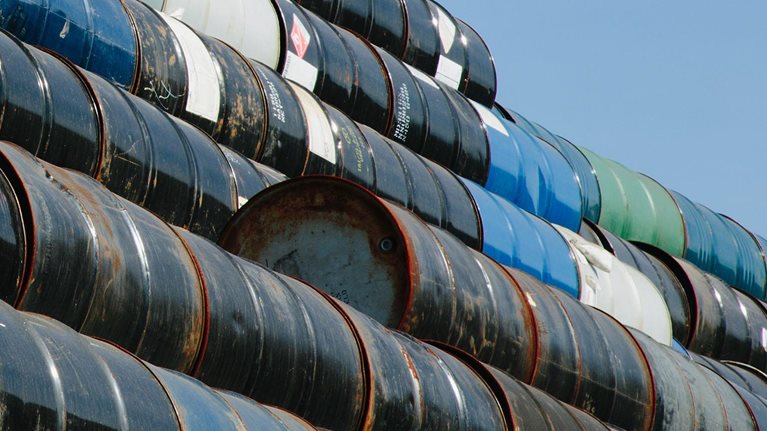When Royal Dutch Shell announced plans last year to acquire BG Group,1 the Britain-based oil and gas producer, the deal represented both Shell’s largest M&A deal ever and one of the first energy mergers in an era of low oil prices. Although the acquisition came as oil prices continued to fall, investors roundly approved of it.
Gerard Paulides, who led the team that planned the acquisition and worked on its completion, says the strategic discontinuity in the energy sector is more fundamental than finding new resources or taking out costs as oil and gas remain volatile and the mix of energy sources changes. He recently sat down with Ivo Bozon and Dumitru Dediu to discuss deal making in the oil and gas sector, the BG transaction, and the challenges of implementing large mergers and acquisitions. What follows is a transcript of that conversation, edited for publication.
McKinsey: The oil and gas sector would seem to be ripe for deal making. What’s the historical view of the role of M&A in oil and gas?
Gerard Paulides: Historically, the sector has done big M&A deals (rather than just regular asset transactions) when there have been big discontinuities. In the late 1990s, the discontinuity was oil at $10 a barrel, and the focus was on managing costs. In the early 2000s, the discontinuity was the perception that the world was going to run out of oil and gas at some stage. The focus at that point was on finding more oil and gas reserves—both through M&A and organically finding and developing resources to produce. The discontinuity in the current environment is more fundamental than finding new resources or taking out costs. It’s about the ability to move in a changing world with highly volatile oil and gas prices—and, possibly, a different mix of future energy sources.
Companies in the oil and gas sector typically develop assets, resources, and relationships with governments organically and over the long term. We like to hold onto assets, developing and producing them over three or four decades. Arguably, the industry’s integrated model between production upstream, trading, downstream, gas, and chemicals makes it a bit more dynamic than, say, a pure upstream model would. But at the same time, being integrated also makes the industry even more fixed.
McKinsey: How does Shell’s recent acquisition of BG fit into that?
Gerard Paulides: The purpose of acquiring at this moment in time on such a fundamental scale is that it allows us to recycle a meaningful part of our company. It’s a purposeful, deliberate move to emphasize the company’s strategic goals in certain segments, such as integrated gas and deepwater. We always have a coveted, or target, portfolio, but it’s always something of a ten-year outlook. With the BG acquisition, we’ve realized a ten-year strategy goal in one year.
Having done that, the implications of the move for our portfolio are here and now, and not in ten years’ time. And we also have to take out the bits that no longer fit, which are a magnitude bigger than normal. We regularly divest assets from our capital employed. If you make a big move like this one, you have to measure that proportionately—so we now need to divest significantly more, probably double the normal level and maintained over a number of years. We’ll take our time, but we do need to do it to rebalance the company.
McKinsey: You mentioned the volatility in oil prices, but you also talk about an industry that operates over three to four decades. How closely do you watch volatility given that long-term focus?
Gerard Paulides: As a deal maker, I watch volatility closely, in specific segments, over the shorter term, and also in the financial markets in general. Because if volatility is high—over a month, three months, six months—risk capital becomes more scarce and your ability to move is affected. If you’re committed and you can fill that vacuum, then you can realize a first-mover advantage relative to your competition. And once you complete a deal, you can focus on running your business while your competition is still trying to deal with that volatility—retrenching in terms of cutting back spending, cutting back capex, laying off people, and making defensive moves.
Now, that also means that once you’ve done a deal, you do need to get on with it. You can’t continue to behave as if you hadn’t placed your money yet. You’ve been given a license to spend so many billions of dollars, but people are watching you, and they have high expectations. And the bigger the deal, the more fundamentally it will impact the company.
McKinsey: How do you put together the best core M&A team?
Gerard Paulides: A company doing sizable, world-scale M&A should have a core deal team of about ten people—and you need to be deliberate about who you include. It’s not a seniority game; it’s a game about having the best people available for an intense activity over a prolonged period. If you have five external team members available, principals from the bankers, the lawyers, the strategic advisers, then you have a good team—but you need to handpick them. The more you can allow them to do their job and mobilize as their point of view drives them, the better off you are.
Reporting lines are also important. An M&A team leader should have a direct reporting line to the CEO and CFO and also establish a relationship with the board. The head of strategy, if there is one, should be a part of any dialogue around deals but shouldn’t be a conduit for that M&A dialogue between the team and the CEO. If you’re talking about big deals on a global scale, you can only work with one decision maker.

Black swans and barrels: How to think about the future of oil prices
McKinsey: How does the long-term nature of the oil and gas industry correlate with how you think about short-term market reactions? Does the market often get it right at the start, or does it need to see a deal play out over time?
Gerard Paulides: Obviously, financial-market requirements need to be followed during the entire process, ensuring timely and complete disclosure of information. If the market reacts differently than you expect, then either you didn’t explain the deal very well or you didn’t see an issue that the market does. You need to respond to that. I also think that in oil and gas it’s much too easy to say, “We’re a long-term industry, it’s a short-term blip. Let’s ignore it.” The financial markets are based on ultimate transparency of information and immediate pricing, and its feedback is immediate, brutal, transparent—and free.
So you need to know why the markets react the way they do. The financial markets have the luxury of not having all the detail, so they don’t come up with all sorts of rationales to explain why a result is not what you think it should be. They step back and look at the big trends, and compare and contrast, and say, based on all this information, “I get it,” or “I don’t get it.” On the other hand, the company has the luxury of having all the detail, so it knows how to explain the market’s reaction. That can be a good thing or a bad thing, and you have to be honest enough with yourself to tell the difference.
McKinsey: How would you compare the level of effort before announcing a deal of this size with the level of effort after?
Gerard Paulides: If you manage a company like Shell, 99 percent of the company doesn’t know what’s happening prior to the announcement, or why—even though you’re using your entire day and your entire week to deal with the intensity of the planning.
After the deal is announced, the intensity changes, because then 99 percent of the company and the market know what you’re doing. They expect you to allocate time to it. In the beginning, that’s relatively predictable, because you’ve programmed it in, you’ve prepared yourself, and you’ve allocated half your calendar and agenda to manage the deal and half to running the company. And that’s OK. But then you get to the end of the process—in our case, the last 3 months of a 12-month period—and the heat goes up. The scrutiny gets even more intense, as people have to place their bets, the shareholders have to vote, the debt providers have to calibrate their positions, and the other company has to make up its mind considering its own best interests and the latest developments in the market.
For a world-class transaction at the scale of our acquisition of BG—if you think you’re going to be busy in those last three months, double what you expect, and you’ll probably get close to where it will turn out. That’s why it’s important not to underestimate how grueling these things can be. It’s well worth paying extra attention to your own mental and physical fitness—as well as that of your team.
McKinsey: Is there a difference between the intensity of a deal and just the amount of time going into it?
Gerard Paulides: You can spend a lot of time without being intense. We had about 20 subject-matter-expert work streams in the BG deal. At any moment, any of those work streams might be the most important, whether it’s a treasury topic that requires immediate attention, some regulatory discussion for antitrust purposes, or a valuation of an asset in Brazil. So by intensity, I mean the demands of dealing with all those matters at once—when your judgment is consequential at a level you normally don’t have.
There were certain points in 2015 and 2016 when I couldn’t open a newspaper daily without reading some write-up or some subject-matter-expert review—and everyone knows what you’re doing, including your entire family and all your friends. You probably cram three years into one. And you almost think, “What happened in the last 18 months? We were at Easter, and then it was Christmas, and then it was Easter again.” That’s intensity.
McKinsey: On the BG deal, what was the market’s initial reaction?
Gerard Paulides: The BG acquisition was a unique fit for Shell, and the timing and opportunity were there. The market’s reaction to the deal was complete and wholesome, and investors have embraced it as a good match. The debate was not about strategy or the rationale for the deal or the portfolio opportunity that the deal would create with divestments. All that was quickly understood. That was why we started the whole exercise, because it all makes sense.
The debate was “at what price?” With oil prices dropping from above $100 a barrel in early 2015 to below $50 a barrel in early 2016, it’s difficult to price the opportunity. You need to work your way through that. So you have your base valuation, you have your financial metrics, you have your synergy on top of that, and then you have your reset opportunity for the company. And most of the debate was around the reset opportunity and the pricing.
In fact, that’s a pretty luxurious position, because it meant we weren’t debating strategy. We weren’t debating portfolio. Our fundamentals were spot-on. That’s where you want to be for any deal. If you don’t get over that hurdle, you don’t have a hope of discussing financials, and value, and execution, and management quality, and trust, and all of that.
McKinsey: What are the biggest risks to the success of a deal like this?
Gerard Paulides: Failing to recognize the intensity of the integration needed. Or, if we go back to what used to be business as usual, spending as if we hadn’t done this transaction. Market conditions can make it easier or harder. If oil prices go directionally more up than down, life will be easier—but that carries its own risk. An improving market can bail you out too easily, without the intensity of the reset and the portfolio rebalancing. You may forget your original intentions.



